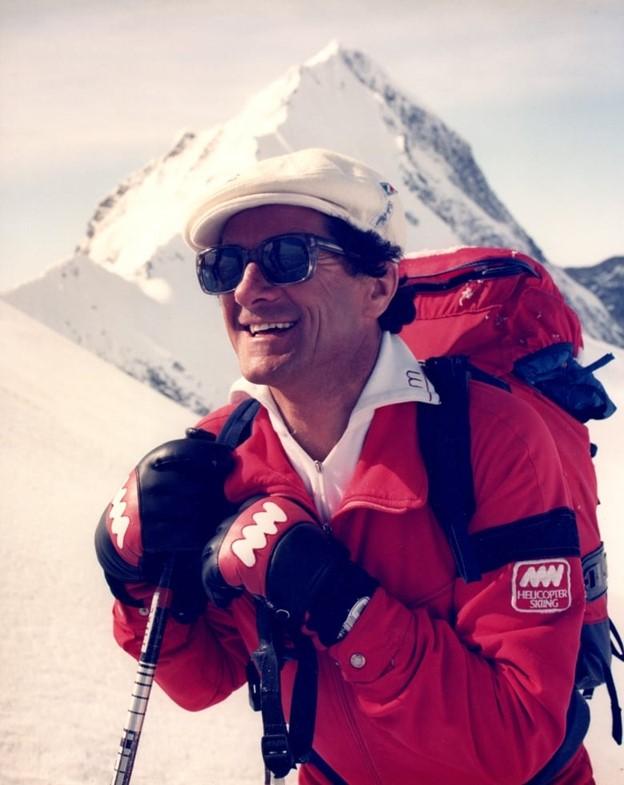Mike Wiegele - Heliskiing pioneer
Mike Wiegele, founder of the Cariboos-based helicopter skiing operation that bears his name, and of the Canadian Ski Guides Association, died July 15 at age 82. He had been hospitalized for the past 10 months with dementia.
Wiegele grew up on a farm in Lading Kärnten , in the rolling hills west of Graz, Austria. It was not a mountain town, but Wiegele was determined to ski and trained as an Alpine racer and instructor. At age 10, in 1959, he emigrated to Canada to join his brother’s carpentry shop in Calgary, but gravitated to Banff. There, he taught at Lake Louise. and earned his Level 4 CSIA certification. While there, he befriended the mountain guide Hans Gmoser. And he met Bonnie Shubin, an expert gymnast, swimmer and surfer, but a bunny-slope skier.
During the winter of 1960-61 Wiegele taught at Mont Tremblant, for ski school director Ernie McCullogh. Looking for deeper snow and bigger mountains, he landed the following winter at Sugar Bowl, California, where he skied for Warren Miller’s camera and joined the pro racing circuit.
Back in Banff, Wiegele became a Canadian citizen. While hiking with Gmoser and Jim McConkey, the three discussed using helicopters to lift guests to mountaintops. In the winter of 1964 Wiegele was named director of the Lake Louise ski school, where he coached young racers like Ken Read, Jim Hunter and Cary Mullen.
In 1965, Gmoser sold his first helicopter rides to paying guests. Wiegele stayed busy at Lake Louise; in 1967 he married Bonnie Shubin, who had meanwhile earned her Level 3 instructor certification. The couple launched a ski shop at Lake Louise, and Wiegele explored the mountains for a potential heliskiing site. He settled on the Cariboos near Valemount, and in 1969 advertised day-trips. It was slow going at first and he didn’t fly a paying guest until 1971, but a year later day trips were a regular occurrence. The 280 hp piston-engine Bell 47s were provided by Yellowhead Helicopters, and could carry only two people at a time – including the guide, so getting a group to the top required several trips.
Warren Miller sent a cameraman and Wiegele’s operation featured in the 1972 production. Word was out, and business picked up. Wiegele needed a site with deeper, lighter snow and less wind, and found it at Blue River, British Columbia. He began flying there in 1974. One of his promotions, the Powder 8 competition launched in 1978, garnered much attention. Wiegele put up the first guest chalets in 1980.
During the ‘80s heliskiing reached a plateau – there simply weren’t a lot of skiers who could handle bottomless powder on the 68mm straight skis of the era. According to Atomic’s Rupert Huber, in 1988 a Powder 8 competitor asked for a fatter powder ski. Huber responded in 1990 with the Powder Plus fat ski (112mm waist width); Wiegele adopted and promoted the concept. Fat skis took off, and heliskiing resumed growing. With Gmoser and a few other operators, Wiegele faced a shortage of competent guides. In 1990 they launched the Canadian Ski Guides Association to train and certify guides.
When Wiegele went into hospital in September, 2020, Bonnie took over management of the company. She asks that donations in his memory go to the Mike Wiegele Avalanche Association Fund, which supports avalanche research.
